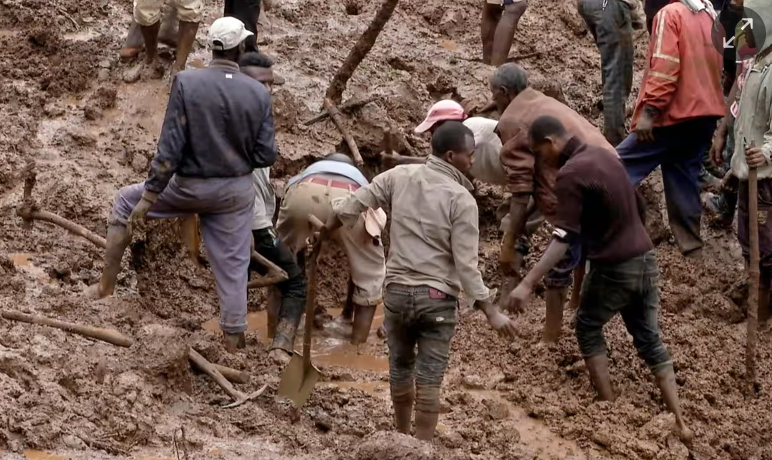Rescue efforts continue in the stricken locality of Kencho Shacha Gozdi, Ethiopia, as distraught locals and emergency teams dig through a sea of mud in search of bodies and survivors following the deadliest landslide in the nation’s history. Using bare hands and shovels, the community is united in the face of overwhelming tragedy.
Rising Death Toll and Grim Forecasts
As of July 24, the United Nations Office for the Coordination of Humanitarian Affairs (OCHA) reported that the death toll has risen to 257, with local authorities fearing it could climb to as many as 500. The disaster struck following heavy rains on Sunday, approximately 480 kilometers from the capital, Addis Ababa—a journey of about 10 hours by car.
The Struggle for Survival
More than 15,000 people are in immediate need of evacuation due to the high risk of further landslides. This includes at least 1,320 children under the age of five and 5,293 pregnant women or new mothers. Aid has started to arrive in the remote, difficult-to-reach area, including four trucks of life-saving supplies from the Ethiopian Red Cross Society, as confirmed by OCHA.
Scenes of Devastation
Graphic scenes circulating on social media highlight the enormity of the tragedy. Images show dozens of men surrounding a pit with exposed human limbs buried in the mud, while others carry bodies on makeshift stretchers. In nearby tents, women wail beside rows of shrouded bodies prepared for burial.
Humanitarian Response
U.N. chief Antonio Guterres expressed his condolences, with spokesman Stephane Dujarric stating that the U.N. and its partners are closely collaborating with the Ethiopian government to assess the humanitarian needs and extent of the damage. U.N. agencies are dispatching food, nutrition, health, and other critical supplies to help those affected.
OCHA reported that 12 injured individuals have been taken to a local hospital, and at least 125 displaced people are now sheltering with other local residents. The exact number of missing persons remains unknown.
Vulnerability and Conservation Efforts
Senait Solomon, head of communications for the South Ethiopia regional government, noted that the landslide site was inherently prone to disasters due to its sloped terrain. Conservation work, including tree planting, had been underway to protect the area at the time of the landslide.
Historical Context and Ongoing Crises
Ethiopia, Africa’s second most populous nation, is frequently battered by climate-related disasters. More than 21 million people, or about 18% of the population, currently rely on humanitarian aid due to ongoing conflicts and natural disasters such as flooding and drought.
Earlier this week, OCHA highlighted that a similar but smaller-scale landslide occurred in the same area in May, resulting in over 50 deaths. Seasonal rains between April and early May had caused significant flooding, displacement, and damage to livelihoods and infrastructure.
Past Tragedies
In 2017, Ethiopia faced another devastating landslide when a mountain of garbage collapsed at a dump on the outskirts of Addis Ababa, killing at least 113 people. The deadliest landslide in Africa, however, occurred in Sierra Leone’s capital, Freetown, in August 2017, claiming 1,141 lives. In February 2010, mudslides in the Mount Elgon region of eastern Uganda killed more than 350 people.
Conclusion
The Kencho Shacha Gozdi landslide stands as a stark reminder of the ongoing vulnerability to natural disasters faced by Ethiopia and other nations. As rescue efforts continue and the death toll rises, the resilience and solidarity of the affected communities remain a beacon of hope amid the devastation. The international community’s response will be crucial in providing immediate relief and long-term support to the victims of this catastrophic event.


